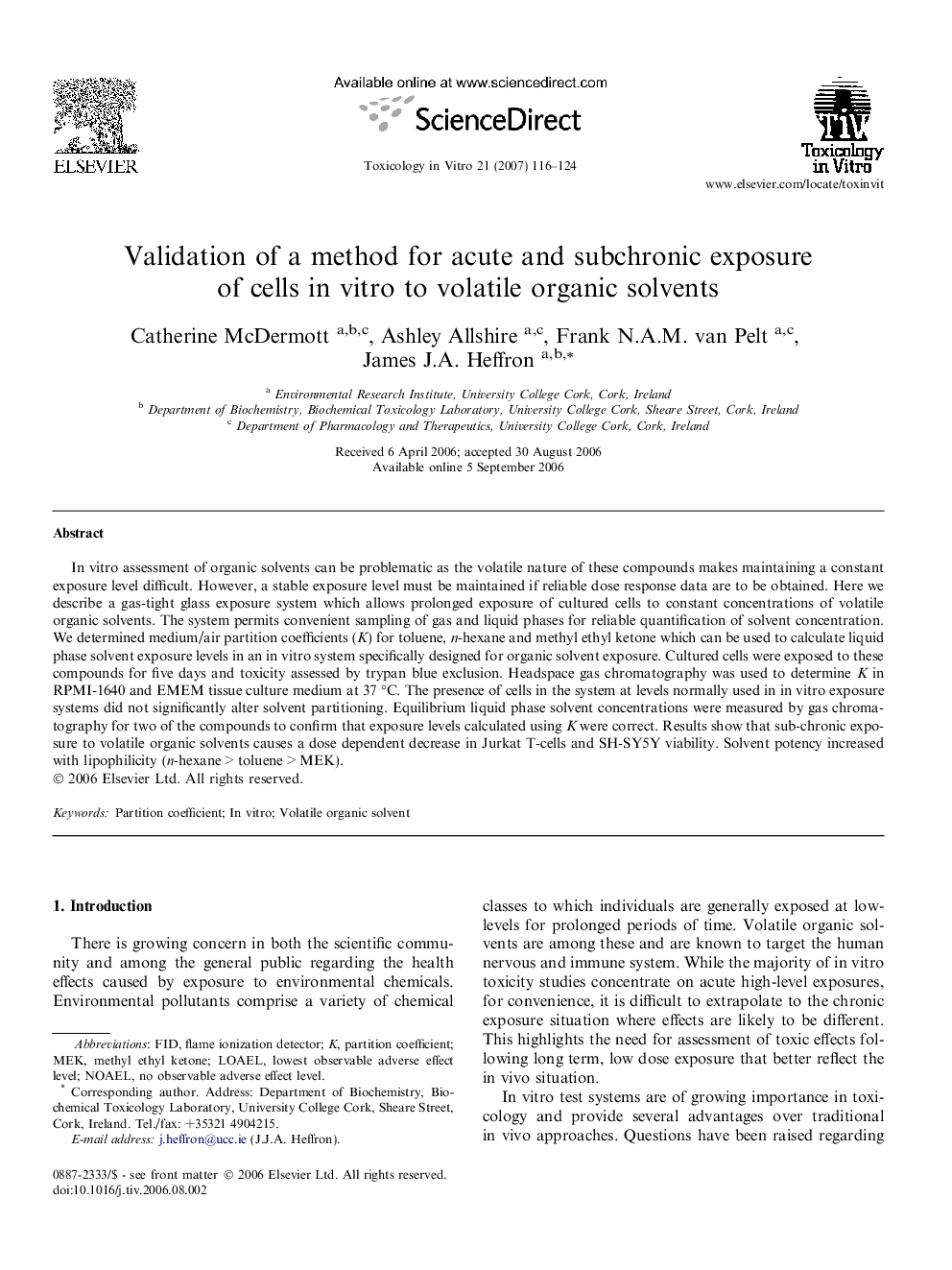| Article ID | Journal | Published Year | Pages | File Type |
|---|---|---|---|---|
| 2603934 | Toxicology in Vitro | 2007 | 9 Pages |
In vitro assessment of organic solvents can be problematic as the volatile nature of these compounds makes maintaining a constant exposure level difficult. However, a stable exposure level must be maintained if reliable dose response data are to be obtained. Here we describe a gas-tight glass exposure system which allows prolonged exposure of cultured cells to constant concentrations of volatile organic solvents. The system permits convenient sampling of gas and liquid phases for reliable quantification of solvent concentration. We determined medium/air partition coefficients (K) for toluene, n-hexane and methyl ethyl ketone which can be used to calculate liquid phase solvent exposure levels in an in vitro system specifically designed for organic solvent exposure. Cultured cells were exposed to these compounds for five days and toxicity assessed by trypan blue exclusion. Headspace gas chromatography was used to determine K in RPMI-1640 and EMEM tissue culture medium at 37 °C. The presence of cells in the system at levels normally used in in vitro exposure systems did not significantly alter solvent partitioning. Equilibrium liquid phase solvent concentrations were measured by gas chromatography for two of the compounds to confirm that exposure levels calculated using K were correct. Results show that sub-chronic exposure to volatile organic solvents causes a dose dependent decrease in Jurkat T-cells and SH-SY5Y viability. Solvent potency increased with lipophilicity (n-hexane > toluene > MEK).
